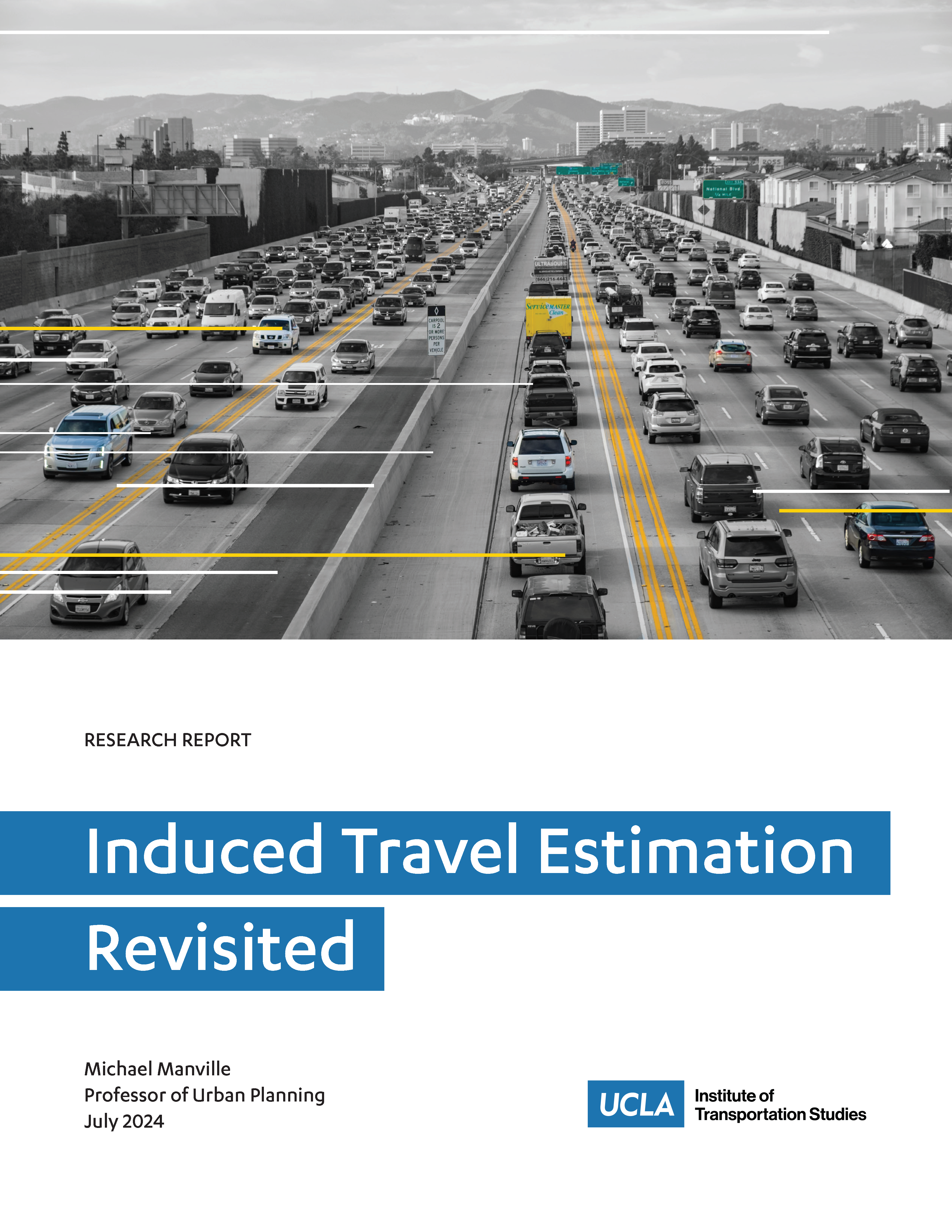Date: July 1, 2024
Author(s): Michael Manville
Abstract
Suppose a government adds two lanes to a highway in both directions, but then restricts access to those lanes. The lanes will be “managed” — open only to people in carpools, or to people in single-occupancy vehicles who pay a toll. The toll will vary in response to demand, with the goal of avoiding congestion and keeping vehicles moving.
Will the total amount of driving in the region rise, fall, or not change?
In California, the question has become important, for two reasons. First, much of the new highway capacity being proposed in the state is HOT lanes. The Southern California Association of Governments (SCAG), for example, has proposed an expansive network of HOT lanes throughout its six-county region. Second, the state of California has changed the way it evaluates transportation’s environmental impacts. Specifically, the state has, in response to Senate Bill (SB) 743, issued an order saying that transportation impacts will now be measured in terms of Vehicle Miles Traveled (VMT), rather than Level of Service (LOS). The state, in essence, now treats new VMT as equivalent to climate damage or environmental degradation. Under this interpretation of SB 743, any project likely to induce new VMT must either mitigate that VMT — through projects that will reduce driving by a comparable amount — or face difficulty being approved.
In this report, Michael Manville weighs in on the question of how HOT lanes should be treated under SB743. Using input from a panel of experts — both academics and transportation practitioners — as a jumping off point, the report examines current practices for estimating induced travel from freeway expansions and delves into the areas where practitioners and academics diverge. The report seeks to resolve some of these areas of disagreement, and make some recommendations for moving forward.


